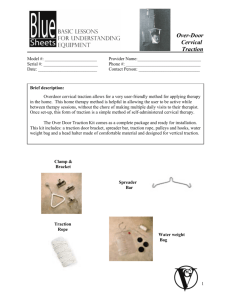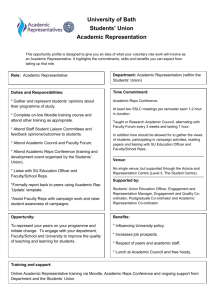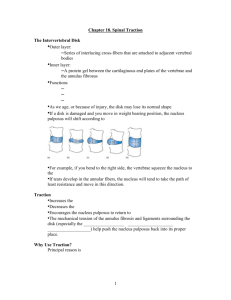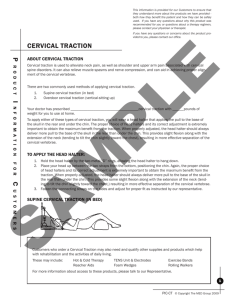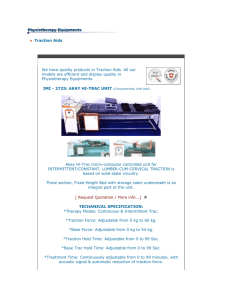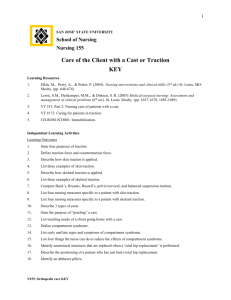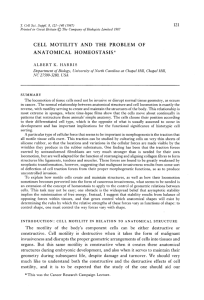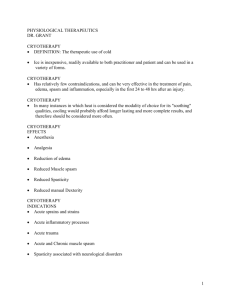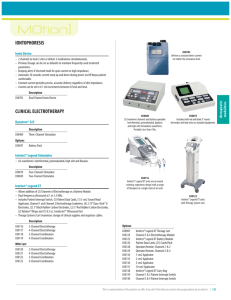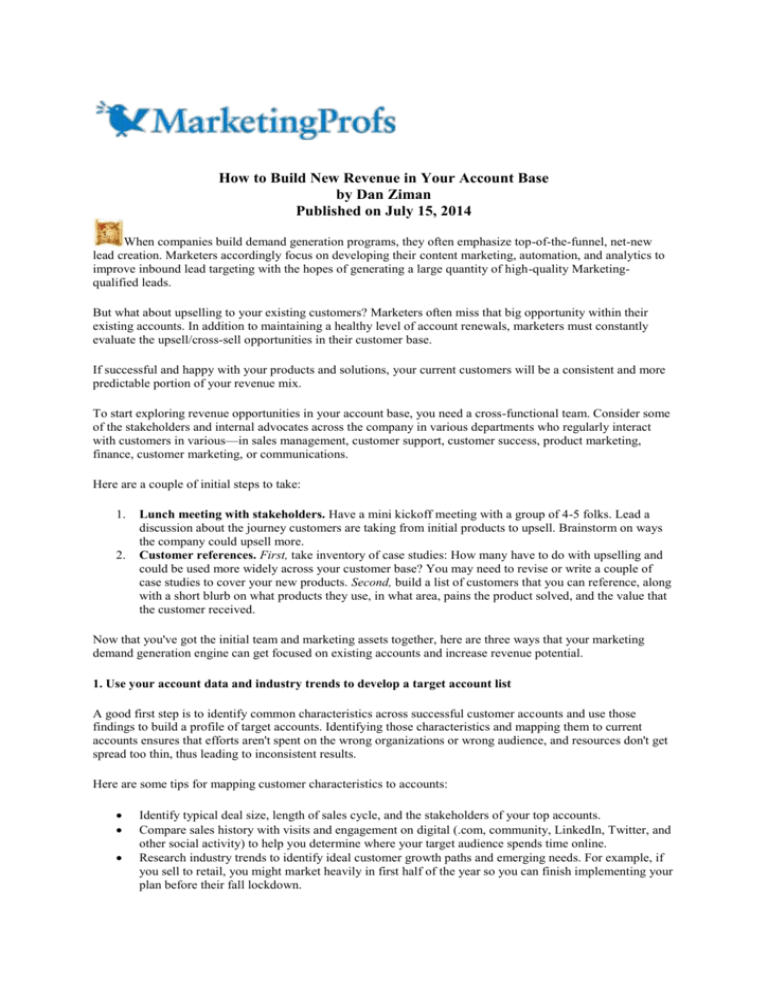
How to Build New Revenue in Your Account Base
by Dan Ziman
Published on July 15, 2014
When companies build demand generation programs, they often emphasize top-of-the-funnel, net-new
lead creation. Marketers accordingly focus on developing their content marketing, automation, and analytics to
improve inbound lead targeting with the hopes of generating a large quantity of high-quality Marketingqualified leads.
But what about upselling to your existing customers? Marketers often miss that big opportunity within their
existing accounts. In addition to maintaining a healthy level of account renewals, marketers must constantly
evaluate the upsell/cross-sell opportunities in their customer base.
If successful and happy with your products and solutions, your current customers will be a consistent and more
predictable portion of your revenue mix.
To start exploring revenue opportunities in your account base, you need a cross-functional team. Consider some
of the stakeholders and internal advocates across the company in various departments who regularly interact
with customers in various—in sales management, customer support, customer success, product marketing,
finance, customer marketing, or communications.
Here are a couple of initial steps to take:
1.
2.
Lunch meeting with stakeholders. Have a mini kickoff meeting with a group of 4-5 folks. Lead a
discussion about the journey customers are taking from initial products to upsell. Brainstorm on ways
the company could upsell more.
Customer references. First, take inventory of case studies: How many have to do with upselling and
could be used more widely across your customer base? You may need to revise or write a couple of
case studies to cover your new products. Second, build a list of customers that you can reference, along
with a short blurb on what products they use, in what area, pains the product solved, and the value that
the customer received.
Now that you've got the initial team and marketing assets together, here are three ways that your marketing
demand generation engine can get focused on existing accounts and increase revenue potential.
1. Use your account data and industry trends to develop a target account list
A good first step is to identify common characteristics across successful customer accounts and use those
findings to build a profile of target accounts. Identifying those characteristics and mapping them to current
accounts ensures that efforts aren't spent on the wrong organizations or wrong audience, and resources don't get
spread too thin, thus leading to inconsistent results.
Here are some tips for mapping customer characteristics to accounts:
Identify typical deal size, length of sales cycle, and the stakeholders of your top accounts.
Compare sales history with visits and engagement on digital (.com, community, LinkedIn, Twitter, and
other social activity) to help you determine where your target audience spends time online.
Research industry trends to identify ideal customer growth paths and emerging needs. For example, if
you sell to retail, you might market heavily in first half of the year so you can finish implementing your
plan before their fall lockdown.
2. Evaluate traction in target accounts
To obtain upsell and cross-sell opportunities, you need to have the right contacts in the customer accounts. Here
are some tips for improving traction:
Do an internal briefing with your inside sales and sales development teams. They need to have
knowledge of the campaign, so have a live meeting. Don't rely on simply sending an email.
Create proper routing of leads to account managers so sales reps can see how and when contacts are
engaging with marketing programs. It's critical that reps know what accounts are showing interest so
the right rep can quickly follow up.
Map new leads and contacts so that you can evaluate the growth of account traction and understand
which marketing campaigns are most effective.
Have your sales development reps (SDRs) focus on specific accounts and align them with sales
territories or named accounts. It's critical that your SDRs or inside sales teams aren't accidentally
calling into an important customer account that you have significant traction with. Your customers
won't enjoy that, and it's highly inefficient.
3. Have an account-based marketing strategy
Marketing can target specific accounts in various ways to align with Sales' account strategy to expand the
brand's footprint. Here are some account-based marketing strategy tips:
Have a single view of the truth. Map all customer activity and net new prospects for that customer to
one account record. Make sure there are no account duplicates and that you have strong guidelines for
account creation and matching of new contacts.
Plan marketing initiatives around horizontal role and vertical industry content programs. For each
initiative, have an integrated set of marketing activities (conferences, whitepapers, webcasts, exec
dinners, digital advertising, PR, etc.)
Understand where your target audience looks for information. What sites do they visit? What
publications do they read? What events do they attend?
Develop a customer journey or path they can take as they purchase and implement each product.
Evaluate a few customers who've taken the journey and try to replicate (and validate).
Above all, measuring your results at the beginning (benchmarks) and at the end will be the key to how you mold
and continue your customer-base selling strategy. Be sure to give yourself enough runway to evaluate and to be
ready to maneuver along the way as you learn more about your customers' needs.
Close this window
Copyright notice
Copyright © 2000-2014 MarketingProfs.com
All Rights Reserved.







